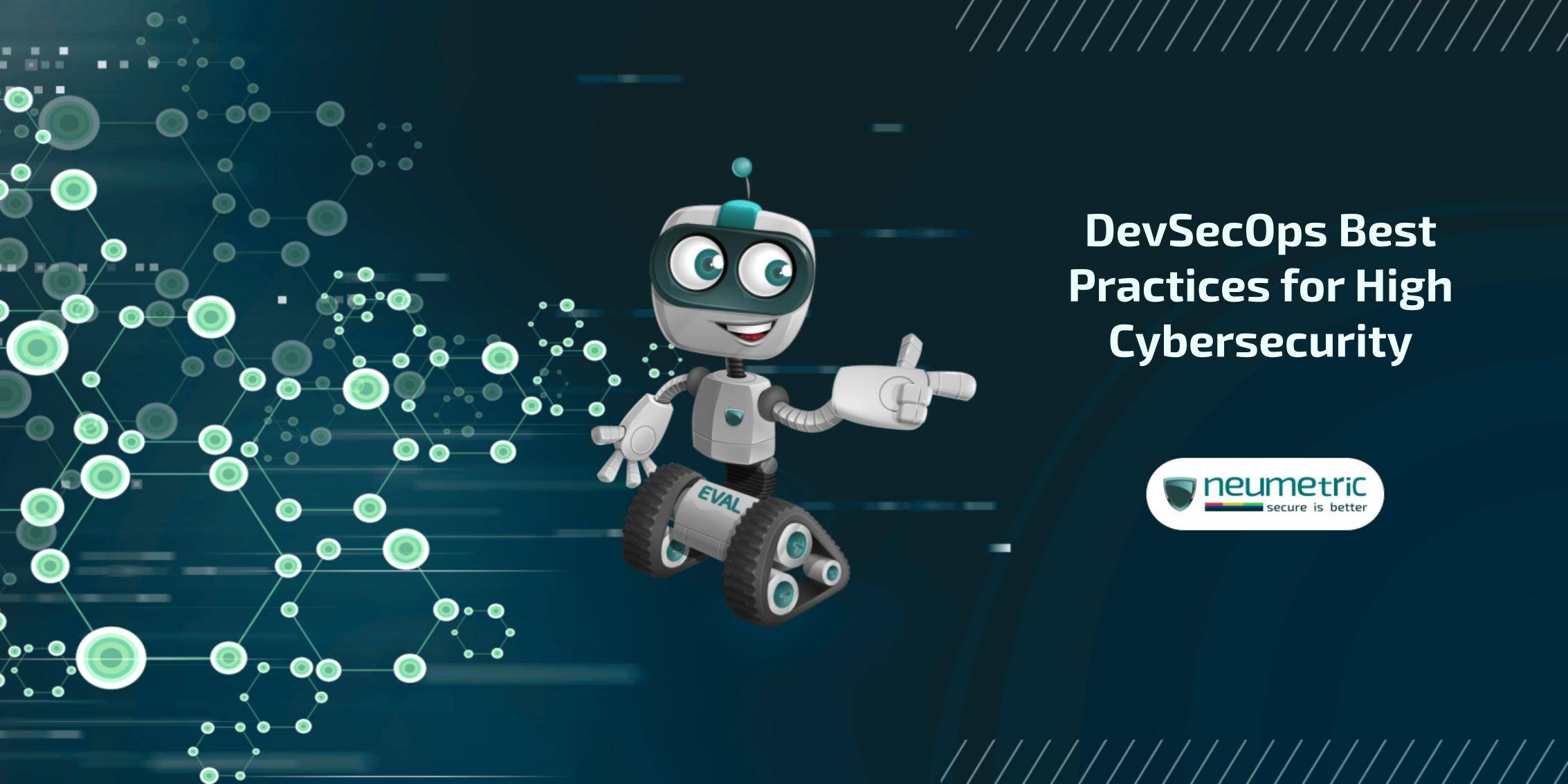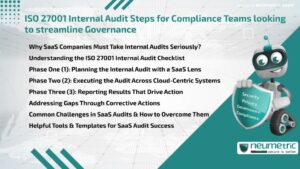Table of Contents
ToggleDevSecOps Best Practices for High Cybersecurity
Introduction
In the fast-paced world of software development, DevSecOps has evolved as an essential technique to ensure the security of digital systems. DevSecOps, an acronym for Development, Security & Operations, signifies a cultural & technical shift that incorporates security principles throughout the software development lifecycle. Unlike traditional security measures, which were frequently applied in isolation, DevSecOps encourages a comprehensive, proactive approach to identifying & mitigating security threats throughout the development process.
Businesses rely heavily on digital platforms, therefore the development of cyber attacks poses serious concerns. Cybersecurity is more than just a technical requirement; it is a business imperative. A successful cyber assault can result in reputational harm, loss of customer trust & potential legal ramifications, in addition to cash losses.
The digital era has ushered in a wave of increasingly sophisticated cybersecurity threats. Ransomware attacks, data breaches & other malicious activities have become more prevalent & damaging. Threat actors constantly evolve their tactics, exploiting vulnerabilities in software, networks & human behaviour. As technology advances, so do the capabilities of cybercriminals, making it imperative for organisations to stay ahead in the cybersecurity game.
Understanding DevSecOps
DevSecOps is a logical development of the DevOps technique. While DevOps focuses on breaking down divisions between development & operations teams to optimise processes & improve cooperation, DevSecOps goes a step further. It recognises that security should not be a gatekeeper, but rather an integrated element of the development process, necessitating collaboration across development, security & operations teams.
DevSecOps is guided by several fundamental ideas. These include a shift-left approach, in which security is considered from the start of the project, continuous testing & integration of security solutions & instilling a sense of security responsibility in all stakeholders. Organisations that embrace these concepts can integrate security into the DNA of their development processes.
An essential aspect of DevSecOps is the seamless integration of security into the development pipeline. Traditionally, security was often treated as a bottleneck in the later stages of development. DevSecOps, however, promotes the concept of “shifting left,” meaning that security is introduced early in the development process. This integration ensures that security is not a separate phase but an ongoing consideration throughout the entire development lifecycle.
The Need for High Cybersecurity
The cybersecurity landscape is continuously changing, with threat actors developing new tactics to exploit weaknesses. Organisations confront a wide range of problems when it comes to protecting their digital assets, from sophisticated phishing campaigns to zero-day attacks. DevSecOps is critical in addressing these growing threats by establishing a proactive & adaptable security framework.
The consequences of cybersecurity incidents extend far beyond the immediate technological arena. Businesses may suffer substantial financial losses, reputational damage & legal ramifications. Because today’s digital economy is so linked, a single breach in one sector of the supply chain can have far-reaching consequences. DevSecOps serves as a proactive defence mechanism, reducing the potential effect of incidents through early identification & resolution.
DevSecOps is not merely a theoretical concept but a practical approach to mitigating cybersecurity risks. By integrating security into every phase of development, organisations can identify vulnerabilities early, reducing the attack surface & enhancing the overall security posture. Automation within DevSecOps ensures that security checks are consistent, thorough & timely, allowing for rapid response to potential threats.
Key Components of DevSecOps
Collaboration & Communication
In the traditional model of software development, silos often existed between different teams, each responsible for a specific phase of the development lifecycle. DevSecOps challenges this paradigm by promoting cross-functional teams where members from development, operations & security collaborate closely. This cross-functional approach ensures that security considerations are integrated from the early stages of development, fostering a shared understanding of security objectives.
Effective collaboration among cross-functional teams leads to a more comprehensive identification & resolution of security issues. Developers gain insights into security best practices, while security professionals better understand the application’s intricacies. This synergy creates an environment where security is not a hindrance but an integral part of the development process.
Continuous Communication Channels
Communication is the heart of DevSecOps. Continuous & open communication channels are critical to the success of this system. This includes regular meetings, shared documents & real-time communication tools. Teams that establish a culture of transparent communication may resolve security risks quickly, exchange ideas & collaborate to design a more secure product.
In addition, continuous communication channels are critical for incident response. In the event of a security incident, timely & effective communication is critical for minimising harm. DevSecOps guarantees that all stakeholders are promptly notified, allowing for a coordinated response that reduces the effect of security breaches.
Automation
Automated testing is a key component of DevSecOps, considerably contributing to the early detection of security vulnerabilities. By including security testing into the automated testing process, development teams can identify issues in real time, shortening the time between detection & resolution.
Automated testing encompasses a variety of security tests, including penetration testing, vulnerability scanning & security unit testing. These tests are run consistently & automatically, ensuring that security checks do not rely on manual processes, lowering the risk of human mistake & allowing developers to receive immediate response.
The Continuous Integration/Continuous Deployment [CI/CD] pipeline is a critical component of DevSecOps automation. Continuous Integration automatically integrates code changes into a shared repository, whereas Continuous Deployment automated code deployment into production settings. DevSecOps builds on these notions by seamlessly incorporating security checks into the CI/CD process.
Security gates are implemented at various stages of the pipeline to ensure that code passes extensive security checks before moving on to the next phase. This not only accelerates the development process, but also ensures that security is included into every code update, removing the risk of releasing vulnerable code into production.
Infrastructure as Code [IaC] is a practice where infrastructure configurations are codified, enabling the automation of infrastructure provisioning & management. In the context of DevSecOps, IaC serves as a powerful tool for incorporating security into the infrastructure from the ground up.
Security as Code
Code analysis tools are essential in the DevSecOps arsenal. These tools check source code for security flaws & compliance with security standards. Static Application Security Testing [SAST] tools, for example, examine source code without running it, detecting potential flaws early in the development cycle. Integrating code analysis tools into the development environment enables developers to obtain real-time feedback on security risks while writing code. This instant feedback loop raises developer awareness of security best practices & allows for quick repair of reported concerns.
SAST analyses source code, byte code, or application binaries for security flaws. This type of testing takes place without executing the application. SAST tools detect vulnerabilities in code structure, giving developers insight into potential security flaws. SAST is especially useful in the early stages of development, assisting teams in identifying & addressing security concerns before the code enters the testing or deployment phase. This proactive approach is consistent with the DevSecOps philosophy of shifting left, incorporating security considerations as early as feasible in the development process.
DAST involves testing a running application for vulnerabilities by simulating real-world attack scenarios. This type of testing assesses the application’s security posture in a dynamic environment, identifying potential vulnerabilities that may not be apparent in static code analysis. By incorporating DAST into the testing phase of the development pipeline, organisations can ensure a more comprehensive assessment of their application’s security. DAST complements SAST by providing a holistic view of security vulnerabilities, covering aspects that may only manifest during runtime.
Implementing DevSecOps Best Practices
Early & Continuous Security Education: Investing in early & ongoing security training for all team members is a critical component of DevSecOps adoption. This entails building a security-aware culture in which developers, operational workers & security experts have the knowledge & abilities to identify & handle security issues throughout the development lifecycle. Early security education ensures that developers understand how their coding decisions affect security. Continuous education, on the other hand, keeps staff current on evolving security threats & best practices. This continuous learning process is critical to developing a security-conscious mindset, which allows for proactive risk detection & mitigation.
Threat Modelling: Threat modelling is a proactive method for identifying potential security risks & vulnerabilities in the early phases of development. It entails thoroughly examining the system’s architecture, detecting potential dangers & implementing mitigation techniques. By introducing threat modelling into the design phase, teams may systematically assess their apps’ security posture. This approach aids in making educated judgements regarding security controls & guiding the installation of security measures that are appropriate for the unique threats provided by the application.
Shift Left Approach: The “Shift Left” strategy is a key component of DevSecOps, emphasising the early inclusion of security practices into the development process. Traditionally, security problems were handled later in the development lifecycle, resulting in potential delays & higher expenses. DevSecOps challenges this paradigm by encouraging a shift to the left, where security is built in from the beginning. By addressing security considerations early in the development process, teams can detect & resolve security vulnerabilities while they are less expensive to fix. This strategy greatly decreases the attack surface while improving the overall security posture of the application.
Regular Security Audits & Assessments: Regular security audits & assessments are indispensable for evaluating the effectiveness of implemented security measures. Conducting periodic reviews of code, infrastructure & overall security practices helps teams identify areas for improvement & ensure compliance with security policies & standards. These audits can take various forms, including penetration testing, code reviews & compliance assessments. By regularly subjecting the application & its components to thorough security evaluations, organisations can maintain a proactive security stance & address emerging threats promptly.
Challenges in DevSecOps Implementation
Cultural Resistance: Cultural opposition inside organisations is one of the most significant barriers to DevSecOps implementation. The transition from traditional development methodologies to DevSecOps necessitates a cultural transformation in which cooperation, communication & shared responsibility for security are prioritised. Resistance can be from ingrained habits, fear of change, or a misunderstanding of the benefits of DevSecOps. Addressing cultural resistance entails providing leadership support, education & cultivating a culture of continual development. Teams must realise that DevSecOps is not about blaming people for security concerns, but rather about working together to create a more robust & safe development pipeline.
Integration with Legacy Systems: Many organisations grapple with legacy systems that were not initially designed with security in mind. Integrating DevSecOps practises into such environments poses challenges due to outdated technologies, lack of automation & inherent security vulnerabilities. Legacy systems may lack the flexibility & adaptability required for seamless integration with modern DevSecOps pipelines.
Finding the Right Balance Between Speed & Security: DevSecOps aims to deliver both speed & security, but finding the right balance between the two can be challenging. The pressure to release software quickly may lead to compromises in security, while an overly stringent security posture can impede the speed of development. Achieving the right balance involves effective communication, automation & continuous improvement. Automated security checks in the development pipeline ensure that security is not sacrificed for speed, while regular retrospectives & feedback loops help teams refine their processes to enhance both speed & security.
Conclusion
Recapitulating DevSecOps best practices reveals that this technique is more than a set of principles; it reflects a cultural & operational transformation in how organisations handle software development & security. The emphasis on collaboration & communication among cross-functional teams ensures that security is a shared responsibility rather than an isolated problem. Automation, another important approach, streamlines operations & decreases the danger of human error by incorporating security measures into every stage of development. The concept of “Security as Code” is realised through code analysis tools & testing procedures, which promote a proactive approach to potential vulnerabilities. Early & ongoing security education, combined with threat modelling, establishes DevSecOps as a comprehensive strategy for developing & managing secure systems.
DevSecOps plays a crucial role in addressing the ever-growing challenges of cybersecurity in the digital age. By incorporating security seamlessly into the development lifecycle, DevSecOps ensures that security considerations are not relegated to a post-development phase but are integral to the entire process. This proactive approach significantly reduces the attack surface by catching vulnerabilities early & promotes a continuous improvement mindset.
The collaborative culture fostered by DevSecOps, breaking down traditional silos between teams, means that security is not merely the responsibility of a dedicated security team but is shared across development, operations & security. In essence, DevSecOps ensures a holistic & proactive security posture for organisations, aligning security efforts with the speed & dynamism of modern software development.
The call to action is clear: organisations must actively embrace DevSecOps to navigate the ever-evolving landscape of cybersecurity effectively. This entails a cultural transformation that promotes collaboration, open communication & shared responsibility for security. Investing in early & continuous security education equips teams with the knowledge & skills needed to identify & address security concerns throughout the development lifecycle. The integration of automation, particularly in testing & deployment processes, streamlines operations & ensures the consistent application of security measures. A “Shift-Left” approach, embedding security considerations early in the development process, becomes paramount for reducing vulnerabilities & minimising the cost of addressing issues.
FAQ
What is DevSecOps & how does it differ from DevOps?
DevSecOps is an extension of DevOps that integrates security practices into the entire software development lifecycle, emphasising collaboration between development, security & operations teams. While DevOps focuses on streamlining collaboration between development & operations, DevSecOps adds a security layer, addressing security concerns from the outset.
What are the core principles of DevSecOps?
The core principles of DevSecOps include a proactive approach to security, continuous integration of security practices & fostering a culture of shared responsibility among development, security & operations teams.
How does DevSecOps address the challenges of legacy systems integration?
DevSecOps addresses legacy system integration challenges by adopting a phased approach, gradually updating & securing legacy systems while concurrently implementing DevSecOps practices in newer projects.





